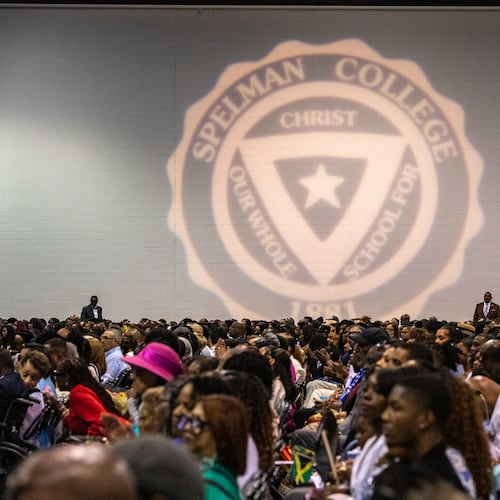With the school budget year just beginning for most systems, a major cost is transportation. With rising fuel costs and diesel engine mechanics harder to find, many districts have begun looking at vehicles that use alternative fuels such as gasoline and propane.
It could be an important change because the engines burn cleaner. Also, because they are easier to maintain and the fuel costs less, the move could save taxpayers money. That savings, school officials said, could be put back into the classrooms.
The cherry on top may be state and federal grants, as well as fuel companies’ incentives to switch from diesel.
Fulton County Schools has become a pioneer of sorts in metro Atlanta when it comes to propane-powered buses. After hearing about the benefits from those who’d already given it a shot, transportation director Sam Ham was waiting for them to get around to the downside.
“Once the sales pitch was over, I thought I’d hear the negatives — there were none,” said Ham. Directors from Pennsylvania, Minnesota, Colorado, Texas and just about everywhere in between talked out how, compared to diesel, propane was the future trend for school buses.
Propane school bus registrations have increased by 700 percent in the past five years. According to the latest registration data, 10 states — Texas, California, Oregon, Pennsylvania, Wisconsin, Illinois, New York, Minnesota, Florida, and Ohio — now have more than 500 propane school buses in operation. In 2017 alone, approximately 90 new school districts and bus contractors transitioned to propane school buses for the first time.
Ham went to a testing facility in Canada to see for himself and ended up replacing 90 buses.
“The board of education and superintendent were very supportive,” said Ham. “At $100,000 each, that’s a pretty significant investment.”
By the end of this year, he plans to have a total of 200 — about a quarter of his fleet.
The quest for alternative fuels for school buses, beginning nearly two decades ago, wasn’t initially based on economics, but health, said Tucker Perkins, president and CEO of the Propane Education and Research Council. “The World Health Organization had recognized (particulate matter in emissions) as a carcinogen that had a greater impact on young lungs than those of adults,” he said. At the time, school buses would idle for hours and children were exposed to massive amounts of exhaust.
Bus manufactures began to look at alternative fuels. And as they saw that gasoline, compressed natural gas and propane were cleaner burning, other factors began to shine for fleet managers — mainly cost.
And for most, propane-fueled buses checked all the boxes: cleaner to burn, cheaper and easier to maintain, easier to handle, increasingly easy to come by and provided a quieter ride.
There are two hurdles to purchasing alternative-fuel vehicles, users say: they cost more than diesel-fuel buses, and new infrastructure such as fuel stations can eat into an already tight budget. Compressed natural gas (CNG), for example, can cost as much as $1 million for a fuel station. Most school districts wouldn’t have the funding to cover that unless they partner with the county government, said Jenna Van Harpen, director of alternative fuels for Blue Bird Corporation. With propane, most distributors will provide a dispensing system with a long-term contract.
Georgia-based Blue Bird, the largest school bus manufacturer in the country, builds about 12,000 buses annually. The base price for diesel-powered buses varies, but a CNG bus costs about $25,000 more than diesel; an electric bus about $250,000 more; a propane bus $6,000 to $8,000 more, and a gasoline-powered bus $5,000 less than diesel.
Georgia has some money that could buy cleaner buses, ironically, because of emissions cheating: A $2.9 billion mitigation trust fund, distributed among states, was part of Volkswagen's settlement with the Environmental Protection Agency. Much of Georgia's share is being used for school districts to replace diesel-fuel buses with those using alternative fuels.
Fulton County has partnered with AmeriGas to provide a 30,000 gallon propane tank and eight fueling stations at its North Fulton facility. And since it’s in the midst of remodeling the South Fulton operation, AmeriGas has provided a spot just down the road for buses to fuel up there.
The structures themselves didn’t cost the district a dime.
As for the fuel itself, propane auto gas costs about 30 percent less than gasoline and up to 50 percent less than diesel nationwide, and its price holds steady as crude oil prices fluctuate. And the Department of Energy offered rebates of 50 cents a gallon for propane and CNG through the end of 2017. It’s not know if that will be extended.
Ham said other pluses are: Propane doesn’t require after-treatment, such as particulate filters or additives, that a diesel bus needs to burn off the soot coming out of the tailpipe, which can add several thousand dollars to a bus maintenance shop’s costs over the year; and a propane-fueled bus doesn’t need to idle before it can go.
Currently, there are 378 propane school buses registered in Georgia in 15 school districts.
For those who aren’t ready to make the leap into propane, a more conventional “alternative” fuel is also getting more school-bus use.
Rick Grisham, executive director of transportation for Cobb County Schools, was introduced to gasoline-powered school buses when Associate Director Mike Warner attended a 2014 convention in Kansas City. A seminar touted the efficiency of the engines, the fuel cost savings and the ease of maintenance. As anyone who oversees a fleet of vehicles will tell you, that’s the magic trifecta.
In 2016, Cobb added 32 gasoline-powered buses to the fleet of 1,151. They replaced older diesel buses that were slated to be scrapped.
“There wasn’t much of a learning curve,” said Grisham. “Everyone fell in love with them right away.”
The mechanics love that there aren't as many additional parts needed to bring the emissions to EPA standards and they start right up even in the dead of winter. The school bus drivers love that they're quieter, easier to handle, have a quicker acceleration and don't have the exhaust fumes of diesel. And the school board loves that the costs per bus will be recouped in six or seven years. Most buses remain in a fleet 15 to 20 years.
In the next three years or so, he’s looking to add propane to the mix.
“I’ve heard good things about propane, but we don’t have the infrastructure in place yet. That’s next on our list.”
Eventually, he’d like to see a third of his fleet using propane, a third using gasoline and a third using diesel.
“I just don’t want to put all my eggs in one basket,” he said. Hurricane Irma caused a diesel shortage last year that affected prices and availability. “I’d like to have many options,” Grisham said.
Grisham and Ham both said that if they can make the environment cleaner and provide more taxpayer dollars to educating students, it’s a win all around.
“I provide a valuable service, but if I can tighten the budget so that we can hire another teacher or provide updated technology to students, I’ve done a great job,” said Ham.
About the Author
Keep Reading
The Latest
Featured

